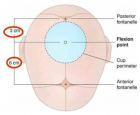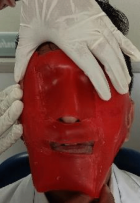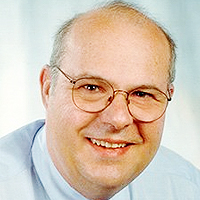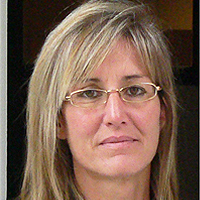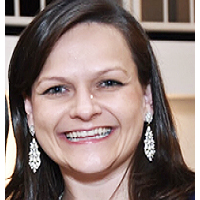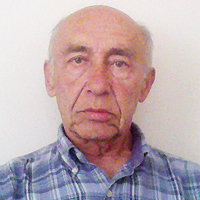Abstract
Editorial
Indian spices and Caffeine treatment for Obesity and Cardiovascular disease
Ian James Martins*
Published: 31 January, 2018 | Volume 2 - Issue 1 | Pages: 010-014
The global obesity epidemic that was previously reported [1,2] is now to worsen with obesity to double in 73 countries around the world [3,4]. Improving the health of obese individuals by dietary restriction, anti-obese foods and increased physical activity [1] has not reduced the global obesity epidemic. Obesity is linked to nonalcoholic fatty liver disease (NAFLD) [5,6] with complications relevant to the metabolic syndrome and cardiovascular disease [7]. Appetite control has become critical to endocrinology and metabolism with the apelinergic pathway and nuclear receptor Sirtuin 1 (Sirt 1) now connected to the endocrine system [8] and critical to metabolism. The apelin-Sirt 1 interaction involves nitric oxide (NO) [9] that is now considered as the defect [10] in the interaction between the peptide apelin and calorie sensitive gene Sirt 1 involved in NO imbalances in the adipose tissue, liver and the brain.
Read Full Article HTML DOI: 10.29328/journal.acem.1001005 Cite this Article Read Full Article PDF
Keywords:
Neuroendocrine system; Metabolism; Adipose tissue; Liver; Mitphagy; NAFLD; Obesity; Apelin; Sirtuin 1; Nitric oxide; Autoimmune disease; Caffeine; Cardiovascular disease; Curcumin; Cinnamon
References
- Appetite dysregulation and obesity inWestern Countries. LAP LAMBERT Academic Publishing. 2013. Ref.: https://goo.gl/9Q9tnW
- Martins IJ. Induction ofNAFLD with Increased Risk of Obesity and Chronic Diseases in DevelopedCountries. OJEM Diseases. 2014; 4: 90-110. Ref.: https://goo.gl/uHz7H6
- An R, Ji M, Zhang S. Global warming and obesity: a systematicreview. Obes Rev. 2018; 19: 150-163. Ref.: https://goo.gl/i9GpEv
- Friedrich MJ. Global Obesity Epidemic Worsening. JAMA.2017; 318:603. Ref.: https://goo.gl/79iEGw
- Fabbrini E, Sullivan S,Klein S. Obesity and non-alcoholicfatty liver disease: biochemical, metabolic, and clinical implications. Hepatology.2010; 51: 679-689. Ref.: https://goo.gl/ebJjFZ
- DietrichP, Hellerbrand C. Non-alcoholic fatty liver disease, obesity and themetabolic syndrome. Best Pract Res Clin Gastroenterol. 2014; 28: 637-653.Ref.: https://goo.gl/ecCzVn
- Kim SH, Després JP, Koh KK. Obesity and cardiovascular disease:friend or foe? Eur Heart J. 2016; 37: 3560-3568. Ref.: https://goo.gl/4ZjohT
- Martins IJ. Nutritionaldiets accelerate amyloid beta metabolism and prevent the induction ofchronic diseases and Alzheimer’s disease. J Endocrinol andMetab. Photon. 2015; 1-48.
- Martins IJ. Apelin andSirtuin 1 dysregulation induce Endocrine and Metabolic Disorders inChronic disease. GJEM. 2017; 1:1. Ref.: https://goo.gl/Z3TmLM
- Apelinergic System Defects with Relevance to Mental Disorders inDiabetes. World J Psychiatry Ment Health Res. 2017; 1: 1001. Ref.: https://goo.gl/q3yoRr
- Martins IJ. UnhealthyNutrigenomic Diets Accelerate NAFLD and Adiposity in Global communities. JMol Genet Med. 2015; 9: 1-8. Ref.: https://goo.gl/mWnRMX
- QureshiK, Abrams GA. Metabolic liver disease of obesity and role of adiposetissue in the pathogenesis of nonalcoholic fatty liver disease. World JGastroenterol. 2007; 13: 3540-3553. Ref.: https://goo.gl/56N5AG
- Martins IJ. Avasimibe andSirt 1 Activators Reverse NAFLD and Obesity. Nov Appro Drug Des Dev. 2017;1: 1-2.
- Mechanisms underlying current and future anti-obesity drugs. TrendsNeurosci. 2013; 36: 133-40. Ref.: https://goo.gl/1n2Ha4
- García-RuizC, Baulies A, Mari M, García-Rovés PM, Fernandez-Checa JC. Mitochondrialdysfunction in non-alcoholic fatty liver disease and insulin resistance:cause or consequence?Free Radic Res. 2013; 47: 854-868.Ref.: https://goo.gl/iwfFy7
- Martins IJ. Defective Interplaybetween Adipose Tissue and Immune System Induces Non Alcoholic Fatty LiverDisease. Updates Nutr Disorders Ther. 2017; 1: 3.1. Ref.: https://goo.gl/YQSnyd
- Martins IJ. Autoimmunedisease and mitochondrial dysfunction in chronic diseases.Res Chron Dis.2017; 1: 10-12. Ref.: https://goo.gl/LXak5D
- MazzucotelliA, Ribet C, Castan-Laurell I, Daviaud D, Guigné C, et al. Thetranscriptional co-activator PGC-1alpha up regulates apelin in human andmouse adipocytes. Regul Pept. 2008; 150: 33-37. Ref.: https://goo.gl/rJtdLa
- KilicU, Gok O, Bacaksiz A, Izmirli M, Elibol-Can B, et al. SIRT1gene polymorphisms affect the protein expression in cardiovasculardiseases. PLoS One. 2014; 9: 90428. Ref.: https://goo.gl/3Y8B9Y
- Biason-Lauber A, Böni-Schnetzler M, HubbardBP, Bouzakri K, Brunner A, etal. Identification of a SIRT1Mutation in a Family with Type 1 Diabetes. Cell Metab. 2013; 17: 448-455.Ref.: https://goo.gl/xjz2Qm
- Hughes JW, Herold KC. Novel SIRT1 MutationLinked to Autoimmune Diabetes in Humans. Cell Metab. 2013; 17: 311-312. Ref.: https://goo.gl/NQ5rtv
- Type 3 diabetes with links to NAFLD and Other Chronic Diseases in theWestern World. Int J Diab and Metab Disord. 2016; 1: 1-5. Ref.: https://goo.gl/hGqXFe
- Martins IJ. Heat shock gene Sirtuin 1 regulatespost-prandial lipid metabolism with relevance to nutrition and appetiteregulation in diabetes. Int J Diab Clin Diagn. 2016; 3: 1-3. Ref.: https://goo.gl/WdzCgC
- Martins IJ. Regulation ofCore Body Temperature and the Immune System Determines Species Longevity.Curr Updates Gerontol. 2017; 1: 6. Ref.: https://goo.gl/y3tCqE
- Martins IJ. CaffeineConsumption and Induction of Obesity in the Developed World. Ann ObesDisord. 2017; 2: 1018. https://goo.gl/km1Unh
- Martins IJ. NutritionTherapy Regulates Caffeine Metabolism with Relevance to NAFLD andInduction of Type 3 Diabetes. J Diabetes Metab Disord. 2017; 4: 019. Ref.: https://goo.gl/ukJA55
- Caffeine with Links to NAFLDand Accelerated Brain Aging. In Tech Open. 2017. Ref.: https://goo.gl/8dZsGD
- Martins IJ. Caffeineconsumption with Relevance to Type 3 diabetes and accelerated brain aging.Res Reveiws: Neurosci. 2016; 1: 1-5. Ref.: https://goo.gl/qbUzY8
- Martins IJ. Indian Spicesand Unhealthy Diets interfere with Drug Therapy in Diabetes andNeurodegenerative Diseases. Nov Appro Drug Des Dev. 2018; 3: 1-4. Ref.: https://goo.gl/H5YZN4
- EjazA, Wu D, Kwan P, Meydani M. Curcumin inhibits adipogenesis in 3T3-L1adipocytes and angiogenesis and obesity in C57/BL mice. J Nutr. 2009; 139:919-925. Ref.: https://goo.gl/XspCuq
- TeichT, Pivovarov JA, Porras DP, Dunford EC, Riddell MC. Curcumin limits weightgain, adipose tissue growth, and glucose intolerance following thecessation of exercise and caloric restriction in rats. J Appl Physiol(1985). 2017; 123: 1625-1634. Ref.: https://goo.gl/djjGKY
- WangS, Wang X, Ye Z, Xu C, Zhang M, et al. Curcumin promotes browning of whiteadipose tissue in a norepinephrine-dependent way. Biochem Biophys ResCommun. 2015; 466: 247-253. Ref.: https://goo.gl/SuiirT
- Curcumin and obesity.Biofactors. 2013; 39: 78-87. Ref.: https://goo.gl/wkqhdv
- InzaugaratME, De Matteo E, Baz P, Lucero D, García CC, et al. New evidence for thetherapeutic potential of curcumin to treat nonalcoholic fatty liverdisease in humans. PLoS ONE. 2017; 12: e0172900. Ref.: https://goo.gl/C5CdXU
- PanahiY, Kianpour P, Mohtashami R, Jafari R, Simental-Mendía LE, et al. Efficacyand Safety of Phytosomal Curcumin in Non-Alcoholic Fatty Liver Disease: ARandomized Controlled Trial. Drug Res (Stuttg). 2017; 67: 244-251. Ref.: https://goo.gl/QzbkiS
- RahmaniS, Asgary S, Askari G, Keshvari M, Hatamipour M, et al.Treatment of Non-alcoholic Fatty Liver Disease with Curcumin: A RandomizedPlacebo-controlled Trial. Phytother Res. 2016; 30: 1540-1548. Ref.: https://goo.gl/oBQ7j7
- BaligaMS, Jagetia GC, Rao SK, Babu K. Evaluation of nitric oxide scavengingactivity of certain spices in vitro: a preliminary study. Nahrung. 2003; 47:261-264. Ref.: https://goo.gl/97anfL
- KalaivaniP, Saranya RB, Ramakrishnan G, Ranju V, Sathiya S, et al. Cuminum cyminum,a dietary spice, attenuates hypertension via endothelial nitric oxidesynthase and NO pathway in renovascular hypertensive rats. Clin ExpHypertens. 2013; 35: 534-542. Ref.: https://goo.gl/R5V2P9
- Nakatake R, Hishikawa H,Matsuhima H, Nakamura Y, Ishizaki M, et al. Curcumin protects liverinflammation by suppressing expression of inducible nitric oxide synthasein primary cultured rat hepatocytes. Functional Foods in Health andDisease. 2017; 7: 716-734. Ref.: https://goo.gl/CyxUaA
- CalabreseV, Scapagnini G, Colombrita C, Ravagna A, Pennisi G, et al. Redoxregulation of heat shock protein expression in aging and neurodegenerativedisorders associated with oxidative stress: a nutritional approach. AminoAcids. 2003; 25: 437-444. Ref.: https://goo.gl/kZ3LvS
- MaitP, Manna J. Activation of Heat Shock Proteins by Nanocurcumin to PreventNeurodegenerative Diseases. Brain Disord Ther. 2014; 3:139. Ref.: https://goo.gl/vSsgkU
- Martins IJ. CalorieSensitive Anti-Aging Gene Regulates Hepatic Amyloid Beta Clearance inDiabetes and Neurodegenerative Diseases. EC Nutrition ECO. 2017; 01: 30-32.Ref.: https://goo.gl/FswPeB
- ShatwanIA, Ahmed LA, Badkook MM. Effect of barley flour, crude cinnamon, andtheir combination on glycemia, dyslipidemia, and adipose tissue hormonesin type 2 diabetic rats. J Med Food. 2013; 16: 656-662. Ref.: https://goo.gl/uvZt6j
- LopesBP, Gaique TG, Souza LL, Paula GS, Kluck GE, et al. Cinnamon extractimproves the body composition and attenuates lipogenic processes in theliver and adipose tissue of rats. Food Funct. 2015; 6: 3257-3265. Ref.: https://goo.gl/5bCMBm
- Kwan HY, Wu J, Su T, ChaoX-C, Liu B, et al. Cinnamon induces browning in subcutaneous adipocytes.Scientific Reports. 2017; 7: 2447. Ref.: https://goo.gl/NGzgYy
- AskariF, Rashidkhani B, Hekmatdoost A. Cinnamon may have therapeutic benefits onlipid profile, liver enzymes, insulin resistance, and high-sensitivityC-reactive protein in nonalcoholic fatty liver disease patients. Nutr Res.2014; 34: 143-148. Ref.: https://goo.gl/hCkdx7
- Hekmatdoost A. Prevention of Nonalcoholic FattyLiver Disease (NAFLD) Progression to Nonalcoholic Steatohepatitis (NASH)by Modification of Lifestyle and Dietary Supplements. J Clin Nutr Diet.2016; 2: 2. Ref.: https://goo.gl/rRi7VN
- EslamparastT, Eghtesad S, Poustchi H, Hekmatdoost A. Recent advances in dietarysupplementation, in treating non-alcoholic fatty liver disease. World J Hepatol. 2015; 7:204-212. Ref.: https://goo.gl/C6dmCa
- Martins IJ. Insulin TherapyInactivation is connected to NAFLD and Diabetes Severity Index. J DiabClin Stud. 2017; 1: 001-003. Ref.: https://goo.gl/zXAMW3
- WilsonPW, Bloom HL. Caffeine Consumption and Cardiovascular Risks: Little Causefor Concern. J Am Heart Assoc. 2016; 5: 003089. Ref.: Ref.: https://goo.gl/mQymj7
- DingM, Bhupathiraju SN, Satija A, van Dam RM, Hu FB. Long-term coffeeconsumption and risk of cardiovascular disease: a systematic review and adose-response meta-analysis of prospective cohort studies. Circulation.2014; 129: 643-659. Ref.: https://goo.gl/eY1FgP
- Martins IJ. Genomic Medicine and Acute Cardiovascular Disease Progression. Res Chron Dis. 2018.
Figures:

Figure 1
Similar Articles
-
Recurrent Cardiac Events Driven by Prothrombotic Burden in a Patient Undergoing Lipoprotein Apheresis for High Lp(a) LevelsGabriele Cioni*,Rossella Marcucci,Rosanna Abbate,Giovanna D’Alessandri. Recurrent Cardiac Events Driven by Prothrombotic Burden in a Patient Undergoing Lipoprotein Apheresis for High Lp(a) Levels. . 2017 doi: 10.29328/journal.hcem.1001001; 1: 001-005
-
Indian spices and Caffeine treatment for Obesity and Cardiovascular diseaseIan James Martins*. Indian spices and Caffeine treatment for Obesity and Cardiovascular disease. . 2018 doi: 10.29328/journal.acem.1001005; 2: 010-014
-
New pharmacological strategies in some metabolic endocrine disorder under a toxicological approachLuisetto M*,Ghulam Rasool Mashori,Cabianca luca. New pharmacological strategies in some metabolic endocrine disorder under a toxicological approach. . 2018 doi: 10.29328/journal.acem.1001006; 2: 015-021
-
Association between obesity profile and non-alcoholic fatty liver by race/ethnicityMartin Galindo,Katrina M Schrode,Magda Shaheen*. Association between obesity profile and non-alcoholic fatty liver by race/ethnicity. . 2021 doi: 10.29328/journal.acem.1001017; 5: 001-010
-
Evaluation of endothelial function in obese children and adolescentsHacer Efnan Melek,Ayça Törel Ergür*,Gökçe Kaan Ataç. Evaluation of endothelial function in obese children and adolescents. . 2021 doi: 10.29328/journal.acem.1001019; 5: 014-023
-
Metabolic syndrome: A case reportDragan Klaric,Marta Martinis*,Marta Klaric. Metabolic syndrome: A case report. . 2021 doi: 10.29328/journal.acem.1001022; 5: 031-035
-
Overlap of two unusual condition in childhood: hibernoma and central diabetes insipidusKübra ARSLAN*,Ayça TÖREL ERGÜR,Mehmet Ali YİNANÇ. Overlap of two unusual condition in childhood: hibernoma and central diabetes insipidus. . 2022 doi: 10.29328/journal.acem.1001023; 6: 001-003
-
Effective treatment of diabetes mellitus and autoimmune diseases by resonance medicinePraznikov Victor*. Effective treatment of diabetes mellitus and autoimmune diseases by resonance medicine. . 2022 doi: 10.29328/journal.acem.1001024; 6: 004-009
-
Effects of dietary supplementation on progression to type 2 diabetes in subjects with prediabetes: a single center randomized double-blind placebo-controlled trialSathit Niramitmahapanya*,Preeyapat Chattieng,Tiersidh Nasomphan,Korbtham Sathirakul. Effects of dietary supplementation on progression to type 2 diabetes in subjects with prediabetes: a single center randomized double-blind placebo-controlled trial. . 2023 doi: 10.29328/journal.acem.1001026; 7: 00-007
-
Physical Performance in the Overweight/Obesity Children Evaluation and RehabilitationCristina Popescu, Mircea-Sebastian Șerbănescu, Gigi Calin*, Magdalena Rodica Trăistaru. Physical Performance in the Overweight/Obesity Children Evaluation and Rehabilitation. . 2024 doi: 10.29328/journal.acem.1001030; 8: 004-012
Recently Viewed
-
Adalimumab in the Treatment of Complex Sarcoidosis-related Inflammatory Eye Disease: A Case SeriesMina Al-Awqati, Supritha Prasad*, Valeria Esparza, Jacqueline Jansz, Wuily Carpio, Christian Ascoli, Huan Chang, Pooja Bhat, Ann-Marie Lobo-Chan, Nadera Sweiss. Adalimumab in the Treatment of Complex Sarcoidosis-related Inflammatory Eye Disease: A Case Series. Arch Vas Med. 2024: doi: 10.29328/journal.avm.1001018; 8: 001-003
-
Cytokine intoxication as a model of cell apoptosis and predict of schizophrenia - like affective disordersElena Viktorovna Drozdova*. Cytokine intoxication as a model of cell apoptosis and predict of schizophrenia - like affective disorders. Arch Asthma Allergy Immunol. 2021: doi: 10.29328/journal.aaai.1001028; 5: 038-040
-
Snow white: an allergic girl?Oreste Vittore Brenna*. Snow white: an allergic girl?. Arch Asthma Allergy Immunol. 2022: doi: 10.29328/journal.aaai.1001029; 6: 001-002
-
Impact of Latex Sensitization on Asthma and Rhinitis Progression: A Study at Abidjan-Cocody University Hospital - Côte d’Ivoire (Progression of Asthma and Rhinitis related to Latex Sensitization)Dasse Sery Romuald*, KL Siransy, N Koffi, RO Yeboah, EK Nguessan, HA Adou, VP Goran-Kouacou, AU Assi, JY Seri, S Moussa, D Oura, CL Memel, H Koya, E Atoukoula. Impact of Latex Sensitization on Asthma and Rhinitis Progression: A Study at Abidjan-Cocody University Hospital - Côte d’Ivoire (Progression of Asthma and Rhinitis related to Latex Sensitization). Arch Asthma Allergy Immunol. 2024: doi: 10.29328/journal.aaai.1001035; 8: 007-012
-
Gentian Violet Modulates Cytokines Levels in Mice Spleen toward an Anti-inflammatory ProfileSalam Jbeili, Mohamad Rima, Abdul Rahman Annous, Abdo Ibrahim Berro, Ziad Fajloun, Marc Karam*. Gentian Violet Modulates Cytokines Levels in Mice Spleen toward an Anti-inflammatory Profile. Arch Asthma Allergy Immunol. 2024: doi: 10.29328/journal.aaai.1001034; 8: 001-006
Most Viewed
-
Impact of Latex Sensitization on Asthma and Rhinitis Progression: A Study at Abidjan-Cocody University Hospital - Côte d’Ivoire (Progression of Asthma and Rhinitis related to Latex Sensitization)Dasse Sery Romuald*, KL Siransy, N Koffi, RO Yeboah, EK Nguessan, HA Adou, VP Goran-Kouacou, AU Assi, JY Seri, S Moussa, D Oura, CL Memel, H Koya, E Atoukoula. Impact of Latex Sensitization on Asthma and Rhinitis Progression: A Study at Abidjan-Cocody University Hospital - Côte d’Ivoire (Progression of Asthma and Rhinitis related to Latex Sensitization). Arch Asthma Allergy Immunol. 2024 doi: 10.29328/journal.aaai.1001035; 8: 007-012
-
Causal Link between Human Blood Metabolites and Asthma: An Investigation Using Mendelian RandomizationYong-Qing Zhu, Xiao-Yan Meng, Jing-Hua Yang*. Causal Link between Human Blood Metabolites and Asthma: An Investigation Using Mendelian Randomization. Arch Asthma Allergy Immunol. 2023 doi: 10.29328/journal.aaai.1001032; 7: 012-022
-
An algorithm to safely manage oral food challenge in an office-based setting for children with multiple food allergiesNathalie Cottel,Aïcha Dieme,Véronique Orcel,Yannick Chantran,Mélisande Bourgoin-Heck,Jocelyne Just. An algorithm to safely manage oral food challenge in an office-based setting for children with multiple food allergies. Arch Asthma Allergy Immunol. 2021 doi: 10.29328/journal.aaai.1001027; 5: 030-037
-
Snow white: an allergic girl?Oreste Vittore Brenna*. Snow white: an allergic girl?. Arch Asthma Allergy Immunol. 2022 doi: 10.29328/journal.aaai.1001029; 6: 001-002
-
Cytokine intoxication as a model of cell apoptosis and predict of schizophrenia - like affective disordersElena Viktorovna Drozdova*. Cytokine intoxication as a model of cell apoptosis and predict of schizophrenia - like affective disorders. Arch Asthma Allergy Immunol. 2021 doi: 10.29328/journal.aaai.1001028; 5: 038-040

If you are already a member of our network and need to keep track of any developments regarding a question you have already submitted, click "take me to my Query."











